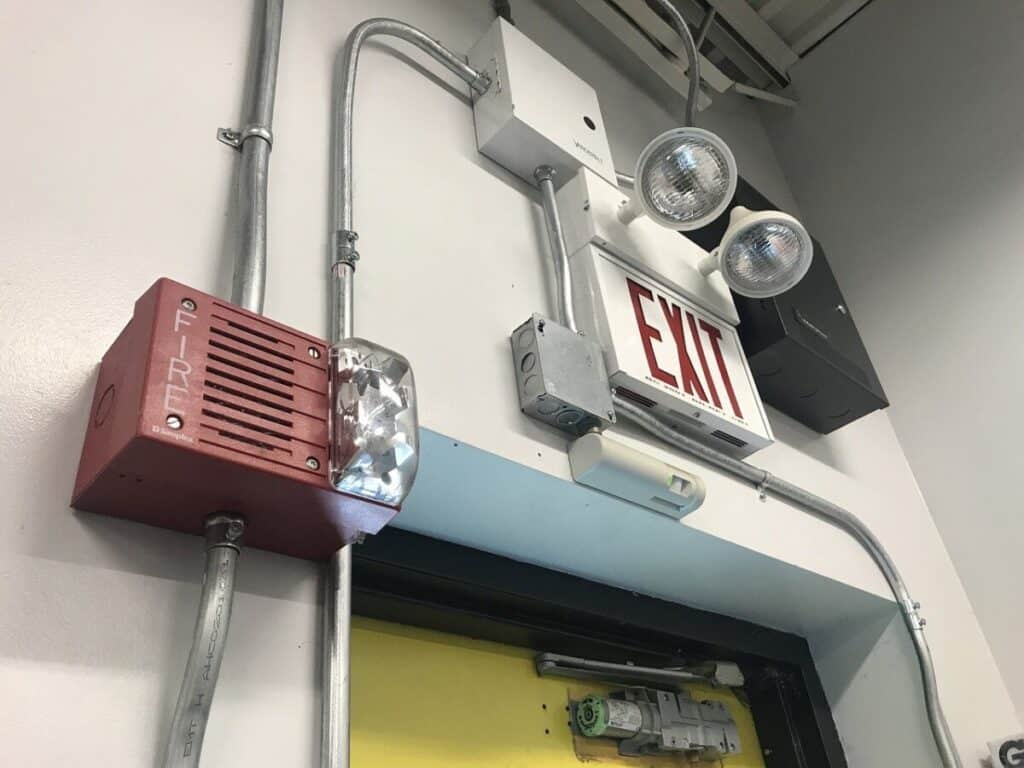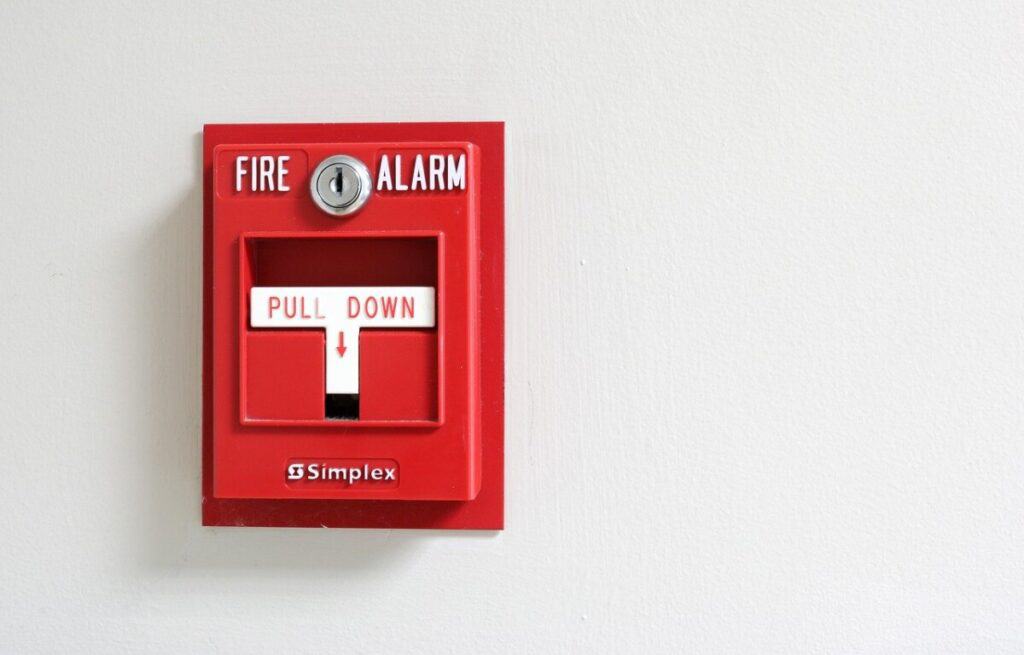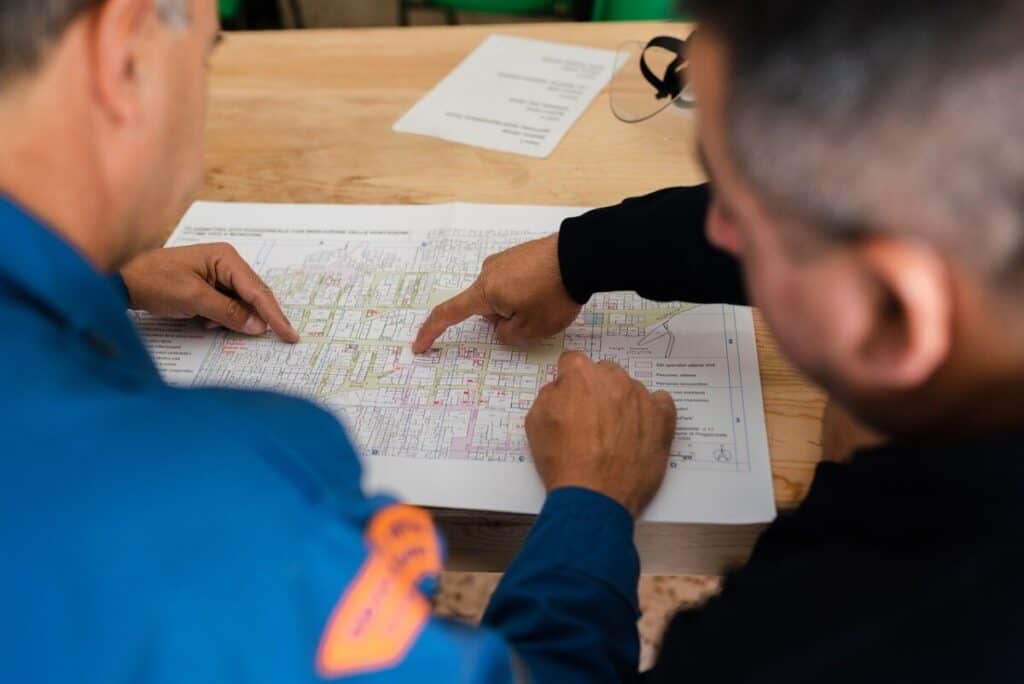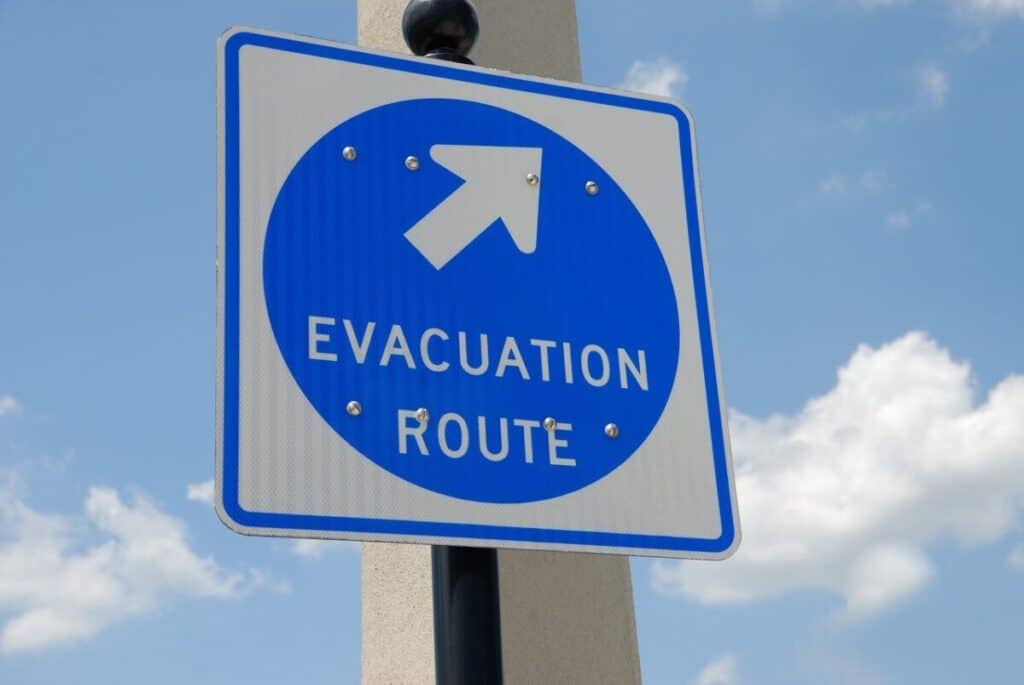
Fire drills are an essential part of keeping people safe from fires, as they provide a chance for people to know what to do when a fire starts at work or school. There are still over 3,000 fires a year in the workplace in the United States alone. That means it’s vital to know what to do when it comes to conducting a fire drill.
Our guide to fire drills examines what a fire drill is, why we need fire drills, what to do and what not to do during a fire drill, how long a fire drill should take and how often fire drills need to be conducted, and finally, we look at a demonstration of the effectiveness of fire drills and prove that they save lives.
We will also include a checklist that you can use when planning and conducted your fire drills, to make sure nothing is missed and it goes smoothly.
Your # 1 priority is keeping your family safe. As a firefighter, I recommend everyone has updated smoke detectors that don’t require battery changes, like these ones from Kidde , a fire extinguisher, like this one from Amerex , and a fire escape ladder if you have bedrooms above the first floor, I recommend this one from Hausse.
There are actions each individual should take to prepare themselves for a drill effectively:
In general, companies and business should facilitate the learning required for their staff to be able to carry out such duties in a safe and effective manner.
Much of this is typically addressed during the company’s onboarding process or through specific fire safety training. You cannot expect people to be aware of these things by themselves.
Most important of all, all information regarding evacuation plans, individual responsibilities, etc. must be freely accessible to everyone in the building. An evacuation plan is of absolutely no value if it is treated as a state secret until the moment that it is put into action.
You cannot expect people to psychically understand the demands of such a situation – they have to be properly prepared for it and failing to do so can cost lives.

The role of each individual during a fire drill is to carry out the evacuation procedure in a safe and sensible manner which reflects the conditions of a real fire.
Here are 15 things they should do:
There are also 8 things that you should not do during a fire drill:

There is no precise measurement for how long a fire drill should take. It will depend on the volumes of people involved, the size and layout of the building, etc. There may also be a delay period, depending on the alarm system in place, for the alarm to fully reset before the building may be safely re-occupied.
However, in most cases, a fire drill should not take more than about 5-15 minutes. Somebody responsible for fire safety will monitor the overall response time and give feedback on what could have been done better and how that time can be reduced in the future.
It is not unusual for some fire drills to take much longer than needed because they aren’t being taken seriously by the staff. Unfortunately, this only indicates a need for further regular drills, in the long run they’re not helping themselves or their colleagues.
It’s worth remembering that if you want people to learn anything – they need to do it and repeat it on a regular basis. This is how kids learn to do things at school and our learning process doesn’t change as adults. For fire drills to be effective – you have to repeat them regularly.
Yes, we know that this can feel like a drag but hoping for the best and preparing for the worst is a much better long-term strategy than “pretending a fire could never happen here” because it always can.
So, how often should fire drills be conducted?
It depends on the working environment, to some, extent. If you work in an environment in which there are serious fire risks present most or all of the time – it is appropriate to conduct very regular drills. A minimum of one every 3 months but if the response times are lacking – it might be necessary to do them more often until everyone responds as they should.
In some areas, certain buildings will need even more frequent fire drills than this. High rise buildings may require fire drills every two months, daycares and treatment centers may require them every month.
By contrast, in lower-risk areas, it’s OK to carry out fire drills on a less regular basis. Every workplace, including every department, building, area, etc. should conduct a minimum of one fire drill a year and if response times are not good – this should, again, become more regular until everyone responds effectively.
The regulations on the legal minimum of fire drills each year vary by state in the United States and it is important that you check the requirements of your state legislative body to ensure you are in compliance with them.
Fires are becoming less common in the current century and that’s a good thing, but they have not been eliminated and lives depend on people responding to a fire in an efficient manner that enables everyone to get out quickly and safely.
If you want your fire drills in your business to be effective then you have to prepare for them and ensure that your whole team is aligned with these plans.
You will need to create a reasonably detailed but still readable and accessible fire evacuation plan for your business or school. This must be a written plan because it needs to be available to everyone in the building to ensure that they know what they’re doing.
We’re not going to teach you to write an evacuation plan here because that’s a whole other article, but it should include:
The plan needs to contain enough detail so that it can be carried out effectively but needs to stay short enough that it can be read and used in an emergency – a 200 page binder may be your natural planning state as a business but it’s overkill for an evacuation plan and it will make the job more difficult than it needs to be.
It’s quite amazing how many businesses make plans and then never share those plans with their staff. You can’t treat an evacuation plan like it’s a secret, it’s only useful to you when everyone in the business understands what’s expected of them and they can’t learn that when the building is on fire.
So, you need to inform, train and brief your in house fire response team first. They need all the information and resources available to them that allows them to carry out their duties when the drill begins.
You need to get the executive team to buy in and to lead by example when the drill starts. No-one will take a fire drill seriously if the executives stay in their offices laughing and eating donuts while it takes place. In a real fire, executives will burn just the same as anybody else.
Finally, you need to ensure that every single employee and contractor understands the purpose of fire drills and what they are required to do when things go wrong.
This is the only way to ensure that everyone is on board and prepared to cooperate when push comes to shove.

When you have a plan to run the first fire drill, let everyone know. While you may want to test people’s responses to drills at a later date when they don’t know it’s a drill, for the first time out – shout the plans from the rooftops.
This allows people to prepare properly and gets the message of, “this is a real thing, it’s not something that we’re doing for the sake of talking about it”.
Use the Intranet, e-mail, staff meetings, Slack, etc. whatever communication channels that you have in the business to keep people informed on the date and make sure that when possible – you’re providing useful information in these communiques. Attach maps, the plan, etc. whatever you think people will need.
A fire drill needs to have certain objectives to be useful. Now, when you run the first fire drill – you will find that you’ll include some objectives that don’t work. That’s OK. Objectives are not set in stone forever – you can change them based on your understanding of data once you’ve run a drill.
However, if you don’t have any objectives at all – how can anyone take the drill seriously? It’s an exercise for the sake of the exercise. So, it can help to at least set a target of measuring responses and specific activities.
Then you can use that data to inform your process moving forward. At a minimum you might want to set objectives of:
Before you do the drill in real life and rehearse it with the whole business – you should rehearse it on paper, first.
Get people to walk through what they’re expected to do and when. Discuss any points of confusion or potential failure.
Then do a bigger rehearsal involving some regular employees too before you finally get to a full fire drill.
Once everyone has mastered a fire drill and evacuation – it can help to come up with more complex scenarios involving other hazards (smoke, fire in rooms, blocked stairwells, etc.) that test people’s ability to adapt when there is a real fire.
It can really help to bring in some outside observers to watch people during a drill. They can spot any potential general problems (such as groups stopping to have a chat or collecting possessions), or specific problems (fire exits are not wheelchair friendly).
They can also help to conduct a final review with the team – where you can ask them questions and really drill down into outcomes and behaviors throughout the drill.
We’d strongly recommend that you develop your own in-house fire drill checklist which reflects your fire evacuation plan. However, we’ve built a basic example checklist that you’re welcome to use to start your planning process on this.
Try to keep the checklist as simple as possible without leaving anything vital out. You don’t want a checklist that takes the team hours to complete after the event because it won’t get done and that means you won’t learn any lessons from the drill.
| Action | Confirmed |
| Communication Protocols | |
| You could hear the fire alarm clearly in all areas of the premises | Yes/No |
| You could hear the public address system clearly in all areas of the premises | Yes/No |
| The Fire Department was informed of the drill | Yes/No |
| Your security group was informed of the drill | Yes/No |
| Fire Containment Protocols | |
| Every door was closed but not kept locked | Yes/No |
| A fire extinguisher was moved to the location of the fire | Yes/No |
| Evacuation Protocols | Yes/No |
| All the fire team members reported to the right stations | Yes/No |
| All the fire team members carried out their duties as per the plan | Yes/No |
| All elevators were brought to the appropriate floor and disabled there | Yes/No |
| The corridors and fire exits were inspected and found to be clear of obstruction | Yes/No |
| The evacuation was conducted in an orderly fashion | Yes/No |
| Any visitors present were included in the drill response | Yes/No |
| A proper status report was delivered following relocation | Yes/No |
| Utility Management Protocols | |
| All electrical appliances were switched off | Yes/No |
| The lights were left on | Yes/No |
| The ventilation system was switched off | Yes/No |
| Record/Valuable Protocols | |
| All cash and important documents were properly secured | Yes/No |
Here is a quick reference guide that can also be helpful for planning and conducting your fire drills.
A fire drill is an essential component of any fire safety program. It is a way to practice the response of individuals within an organization (and often in other responding organizations too) to ensure that in the event of a fire, the best possible safe outcome occurs.
It will begin with the activation of a fire alarm and while you may sometimes be informed in advance that this is a drill, the expectation is that everyone in the building will treat this alarm as a genuine emergency and follow the protocols that have been laid down by the fire safety team.
The exact protocols used will vary based on building types, the equipment or chemicals kept on site, the location of fire exits, etc. So, it is important that each and every individual is briefed on the appropriate procedures on site.
Even visitors to your site should be given some basic information regarding fire safety such as the location of emergency exits, etc.

There is an expectation during a fire drill that a full evacuation of the building will take place and that this evacuation procedure will be timed. The purpose of timing the evacuation is to evaluate the overall effectiveness of the drill.
Fire drills are meant to ensure that everyone leaves the building immediately as soon as it is safe to do so, but often, when they are first introduced, people either do not take them seriously or haven’t been given appropriate guidance on how to behave.
When you know that a fire drill is not fully effective – you have time to ensure people do take it seriously and get the training they need to act appropriately, before a real fire comes along and it becomes a matter of life and death.
In addition to fire drills, however, most businesses will also conduct testing of their fire alarm systems which may result in activation of the alarm – they will normally do these tests outside of their core hours and notify any remaining staff that this is not a fire or a fire drill.
A fire drill is designed to ensure you can get out of a burning building safely, that you know how to deal with fire, smoke, etc. and that you know what the fire alarm sounds like.
Surprisingly, the fire drill is also a relatively recent invention. It was conceived in response to a disaster at the Our Lady of Angels School, Chicago, Illinois in 1958.
A group of children and their teachers became trapped on the 2 nd floor of their building and in their panic and fear they jumped from the windows. As you might expect this resulted in many deaths among the children.
Despite this, only 2 months prior to the fire – the school had passed their fire inspection with flying colors. That’s because they’d only been measured on fire exits and fire extinguishers – nobody had checked the fire alarms, the lack of smoke detectors, the overcrowding, or that they had an evacuation plan.
The fire drill was born in response to this tragedy. It helped people learn about fires, what caused them, how they could prevent them, and what to do when things went very wrong.
This was an incredibly positive development for America’s school system. The events at Our Lady of Angels triggered a systemic chance that ensured within months, the conditions which arose there could not arise again at another American school.
Yes. According to the National Fire Protection Association (NFPA) there are on average more than 3,000 fires a year in American workplaces. That means while the odds of your workplace catching on fire are pretty low (thank goodness) they are not zero.
In many cases, not only is an employer legally obligated to carry out fire drills, but their insurer, their office management firm, and their landlord may expect it too as part of their contractual obligations to the firm.
Rick Rescorla was Morgan Stanley’s security chief. He was one of the people who survived a terrorist attack on the World Trade Center back in 1993 and he became convinced that proper planning and regular fire drills would save lives.
When the horrific events of 9-11 unfolded, Rick Rescorla led all 2,700 Morgan Stanley employees safely out of the building. Fire drills save lives.
So, there you have it, a guide to fire drills: the dos and don’ts. We hope that you never need to deal with fire but, at the same time, we hope that everyone in the country knows what to do if it does happen.
A fire drill isn’t a huge burden on your workday – it’s a way to ensure that you and your colleagues, friends, etc. can stay safe if the worst should happen. Fortunately, once you know the process – it’s usually fairly easy to follow.